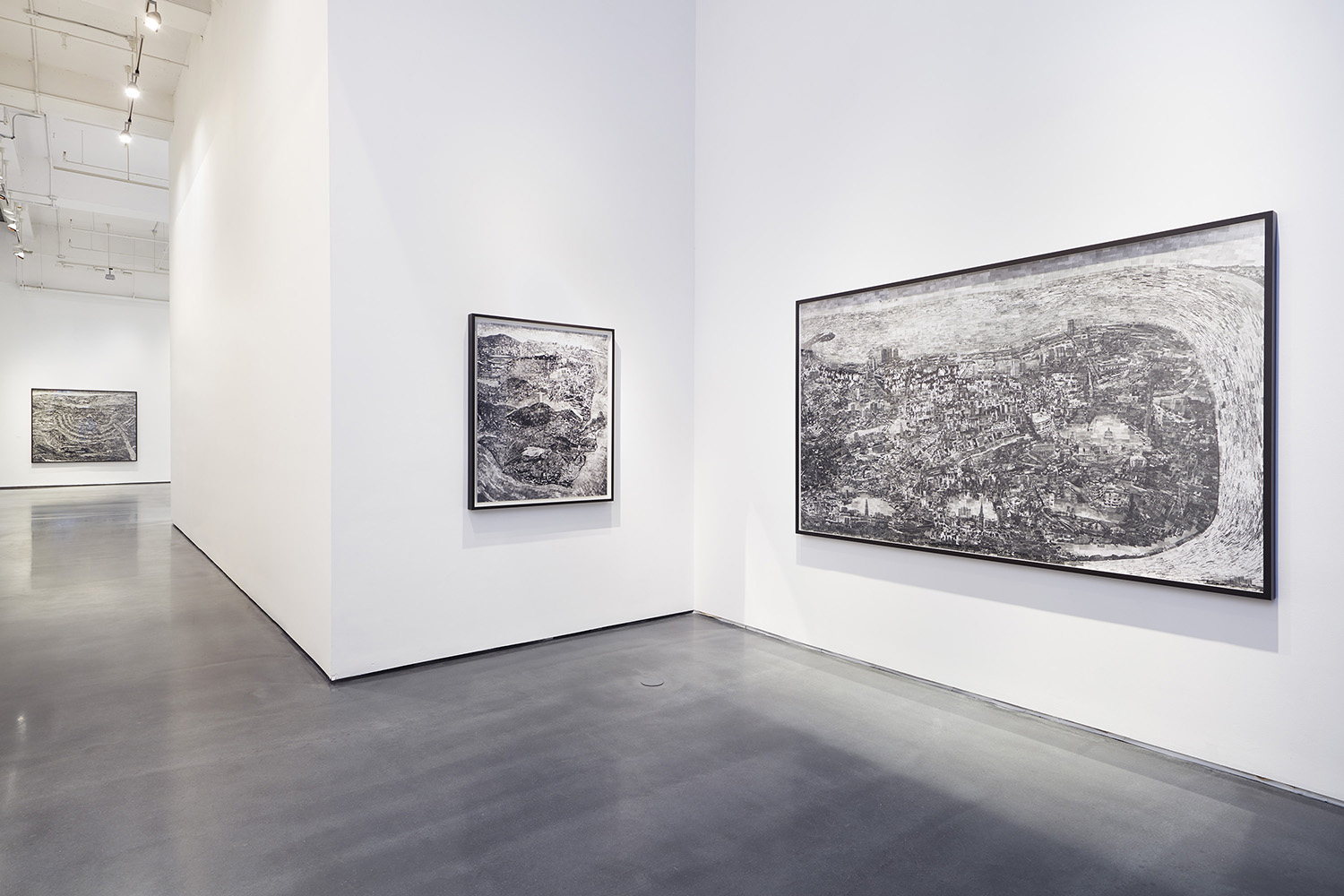Shows
Sohei Nishino’s “Bricolage”


As Sohei Nishino’s “New Work” exhibition at the San Francisco Museum of Modern Art came to an end, the Bryce Wolkowitz Gallery in New York showcased a selection of his large-scale photographs in another show entitled “Bricolage.” These two concurrent shows marked the artist’s first solo presentations in the United States.
Nishino’s work involves creating large-scale diorama maps of cities, in some cases up to two meters wide. Each consists of thousands of photos taken during Nishino’s travels to major cities. Using mainly black-and-white film, he spends up to three months in a location capturing its moments, monuments and memories. In Diorama Map, New York (2006), the Empire State Building is made up of multiple street-level shots, while downtown is revealed from a bird’s eye view. These vantage points provide the viewer with a sense of depth; the physical limitations of two-dimensional space are void in Nishino’s photographic reconstructions.
Only two displayed pieces use color photography, Diorama Map, New Delhi (2013) and Diorama Map, Istanbul (2011). In the former, colored portraits of Holi festival-goers—covered in a spectrum of dyed powders—contrast starkly against a sepia-tinged photo of an emaciated cow. In the map of Istanbul, Nishino includes images of dark blue Islamic-style geometric patterns, a reference to the vibrant tiles of the historic Blue Mosque. This sparse use of color highlights vividness of these hues in Nishino’s seemingly monochrome memories.

The true art is not in Nishino’s individual photos, but in the painstaking execution to create his photomontages. Thousands of contact sheets are developed, and then each photograph is meticulously cut out using scissors so it can be arranged in a precise location. Rather than editing his take, the artist uses as many of his photos as possible as a means of showing his travels in their entirety. Here, Nishino’s inspiration drawn from Ino Tadataka—the cartographer responsible for Japan’s first modern surveyed map—is most visible; much like Tadataka, he travels on foot to capture the true essence of the land. His dedication to fully charting his journeys is a demonstration of empiricism. When discussing his work, Nishino said, “What results is not at all a map to convey precise information, but the record of how I, as a human being, have walked through their streets and how I looked at those streets. This technique of mapmaking blends together physical space and personal experience, portraying both a corporeal and emotional journey.
Beyond expressing his personal experiences, Nishino is also able to show the epitome of each city’s vitality. He is no mere surveyor of observable landscapes; he brings to life a city’s societal and emotional highs and lows. Along these lines, Diorama Map, Amsterdam (2014) depicts a patchwork of late-night photographs with the exposed flesh of prostitutes glowing under the camera’s flash. In a different shot nearby, a lone figure rides a bicycle and children walk home from school. These stark contrasts create an overwhelmingly honest portrait of the city.
In a way, the “Diorama Map” series (2003–16) serves as an instinctual reminder of how to explore. Wandering cannot exist in a world where technology renders individual investigation obsolete. The organic approach of Nishino’s work brings to light the nature of true experience—unplanned and aware. So often are we more concerned about having the right experience, rather than having a personal experience.
Every map is a bricolage of Nishino’s experiences, a gestalt of awareness, emotion and place. Monuments like Christ the Redeemer in Diorama Map, Rio de Janeiro (2011) are just as important to Nishino as the people who wander the street in the nearby favelas. He shows us that a city is more than just architecture; it is its people, it is a feeling, and it is belief.
Sohei Nishino’s “Bricolage” is on view at Bryce Wolkowitz Gallery, New York, until March 4, 2017.







